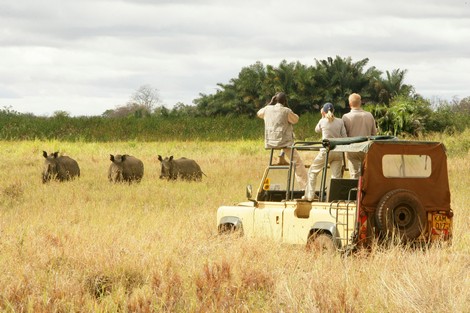
Meru National Park is one of the least visited and therefore one of the least spoiled of Kenya’s national parks. The equator bisects the park whose 1810 sq km landscape is mainly given over to bushland but with grasslands in the west. Thick forests grow along the park’s many watercourses.
The park has 13 rivers and a myriad of mountain streams that feed into the Tana river. Hundreds of bird species have made the park their home – among them the Pel’s Fishing Owl which can be heard hunting at night by the river and the rare Peter’s Finfoot. Being extremely secretive these duck-like birds are usually spotted hugging the tree-sheltered water’s edge. Keen birdwatchers should also keep their eyes peeled for the relatively rare Palm-Nut Vulture which feeds on a mixture of carrion and, not surprisingly, palm nuts.
Mammals inhabiting the park include leopard, cheetah, elephant, lion, both Grevy’s and plains zebra, hartebeest, hippo, reticulated giraffe and some decent sized herds of buffalo. The big cats can sometimes be difficult to spot due to areas of tall grass cover and dense bushland.
The Meru National Park has a chequered history and fared terribly during the late 1980’s when poaching became rife and the entire white rhino population which had been introduced into the park was annihilated. The Kenyan government responded decisively and drove out the poachers and restored strong security. Although tourist numbers are still down on the pre-poaching era, wildlife numbers are encouragingly on the increase. The Kenyan Wildlife Service relocated elephants from the Laikipia plateau to Meru in 2001. This success led to the relocation of a number of other species during that decade and you can now see both black and white rhino as well as healthy herds of reedbuck.
Meru became more famous after the worldwide release of the 1966 film ‘Born Free’ which charted the story of a hand-reared orphan lioness named “Elsa” by animal conservationist Joy Adamson. (George, Joy’s husband, had been forced into shooting Elsa’s mother after she attacked him). When Elsa eventually died, Joy buried her and is herself buried at the same site – Adamson’s Falls – next to the Tana river. A small plaque marks the grave among the often abstract shaped weathered granite blocks that have been formed by the waters.



